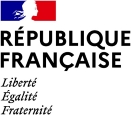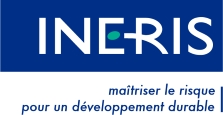On December 19, 2022, the European Commission published a proposal for the revision of Regulation (EC) No 1272/2008 on classification, labeling and packaging of chemicals and mixtures (CLP). This revision aims to define scientific and technical criteria in order to classify substances and mixtures which would present PMT and vPvM properties.
Following the examination of the proposed revision text by the European Parliament and Council, these classifications could come into force in 2023, with a transition period of between
PFAS Regulation
United Nations Stockholm Convention
Perfluorooctanoic acid (PFOA), perfluorooctane sulfonic acid (PFOS) and their derivatives are included in Annexes I and II, respectively, of the Stockholm International Convention on Persistent Organic Pollutants. Members to this convention are required to:
- prohibit the production, use, import and export of PFOA and its derivatives
- limit the production and use of PFOS and its derivatives
This legislation is implemented in the European Union by the POP Regulation.
European Union POP Regulation
PFOA and PFOS, as well as their salts and related compounds, are listed in Annex I of the POP Regulation, which implies a ban on their production, placing on the market and use either as such, or in preparations, or as constituents of articles. Nevertheless, by temporary derogation, the manufacture, placing on the market and use of PFOA, its salts and PFOA-related compounds are temporarily authorized for some applications: photolithography or etch processes in the semiconductor manufacturing, photographic coatings applied to films, textiles for oil- and water-repellency for the protection of workers from dangerous liquids...
Regulation (EU) 2022/2400 of the European Parliament and of the Council of 23 November 2022 makes the following amendments to POP Regulation in waste management:
- Concentration limit in waste of 1 mg/kg for PFOA and its salts and 40 mg/kg for the sum of PFOA-related compounds
- Concentration limit in waste of 1 mg/kg for PFHxS and its salts and 40 mg/kg for the sum of PFHxS-related compounds
This Regulation will apply on 10 June 2023, however, the Commission shall review that concentration limit and shall, where appropriate, adopt a legislative proposal to lower that value, where such lowering is feasible in accordance with scientific and technical progress, no later than 30 December 2027.
European Union REACH Regulation
Restriction procedures
As stricter restrictions are foreseen in the POP Regulation for PFOA, PFOS and their related substances (including its salts and polymers), these replace the restrictions originally defined for these substances in REACH in Annex XVII.
Perfluorocarboxylic acids containing 9 to 14 carbon atoms in the chain (C9-C14 PFCA) may no longer be placed on the market or used in most applications since 23 February 2023.
Several restriction procedures are currently under investigation by the European Chemicals Agency (ECHA):
- Restriction on perfluorohexane-1-sulfonic acid (PFHxS) (except for certain firefighting foams already on the market)
- Restriction on perfluorohexanoic acid (PFHxA), with derogations to be specified, in particular on certain fire-fighting foams, applications in photolithography and surface treatment, textiles used for the protection of workers, etc.
- PFAS restriction dossier in fire-fighting foams
On 7 February 2023, Echa published the restriction proposal targeting the manufacture, placing on the market and use of PFAS. This restriction proposal was submitted on 13 January 2023 by the authorities of Denmark, Germany, the Netherlands, Norway and Sweden and concerns any substance that contains at least one fully fluorinated methyl (CF3-) or methylene (-CF2-) carbon atom (without any hydrogen, chlorine, bromine or iodine atoms attached to it).
Authorization procedures
Several per- and polyfluoroalkyls and their derivatives are included in of the REACH Regulation:
A number of per- and polyfluoroalkyl substances have been identified by the Member State Committee as SVHC (Substance of Very High Concern, candidates for inclusion in the authorization list): perfluorohexane-1-sulfonic acid (PFHxS), its salts and related substances, Perfluorobutane sulfonic acid and its salts (PFBS), nonadecafluorodecanoic acid and its ammonium and sodium salts (PFDA), perfluorononan-1-oic acid and its ammonium and sodium salts (PFNA), PFOA, ammonium pentadecafluorooctanoate (APFO), tricosafluorododecanoic acid (PFDoDA), pentacosafluorotridecanoic acid (PFTrDA), heptacosafluorotetradecanoic acid (PFTDA), henicosafluoroundecanoic acid (PFUnDA), perfluoroheptanoic acid and its salts and reaction mass of 2,2,3,3,5,5,6,6-octafluoro-4-(1,1,1,2,3,3,3-heptafluoropropan-2-yl)morpholine and 2,2,3,3,5,5,6,6-octafluoro-4-(heptafluoropropyl)morpholine.
As a reminder, SVHC are included on a list managed by ECHA, also known as the "Candidate List", because they are candidates for in-depth examination, with a view to their possible inclusion on the list of substances whose use will be subject to authorisation (Annex XIV) in order to market them in the European Union (for the uses covered by the REACH regulation).
OSPAR Convention
PFOS is on the OSPAR Convention's list of chemicals for priority action. The OSPAR Convention is the mechanism by which sixteen governments1 and the European Union cooperate to protect the marine environment of the North-East Atlantic.
Per- and polyfluoroalkyl substances are on the list of substances of potential concern. OSPAR is conducting a comprehensive review of all substances on this list to identify substances to which the obligations of the Hazardous Substances Strategy should apply, but which are not adequately covered by the EU framework or another international forum.
1 Belgium, Denmark, Finland, France, Germany, Iceland, Ireland, the Netherlands, Norway, Portugal, Spain, Sweden, the United Kingdom, Northern Ireland, Luxembourg and Switzerland.
Water Framework Directive
PFOS and its derivatives belong to the list of priority hazardous substances in Annex X of the Water Framework Directive for which discharges, emissions and losses must be phased out.
In addition, PFOS and its derivatives are among the substances whose concentration is used to assess the chemical status of a water body via compliance with the thresholds defined in the Environmental Quality Standards Directive (EQS).
Drinking water
By January 12, 2026 at the latest, Member States must take the necessary measures to ensure that water intended for human consumption complies with the following thresholds established for PFAS by the European Directive 2020/2184:
- 0.5 µg/l for the parameter "Total PFAS "1
- 0.1 µg/l for the parameter "Sum PFAS "2
Technical guidelines for PFAS analysis methods will be established by January 12, 2024 (detection limits, parametric values and sampling frequency).
1 "Total PFAS": Total per- and polyfluorinated alkyl substances
2 "Sum PFAS": sum of per- and polyfluorinated alkyl substances that are of concern for water intended for human consumption

